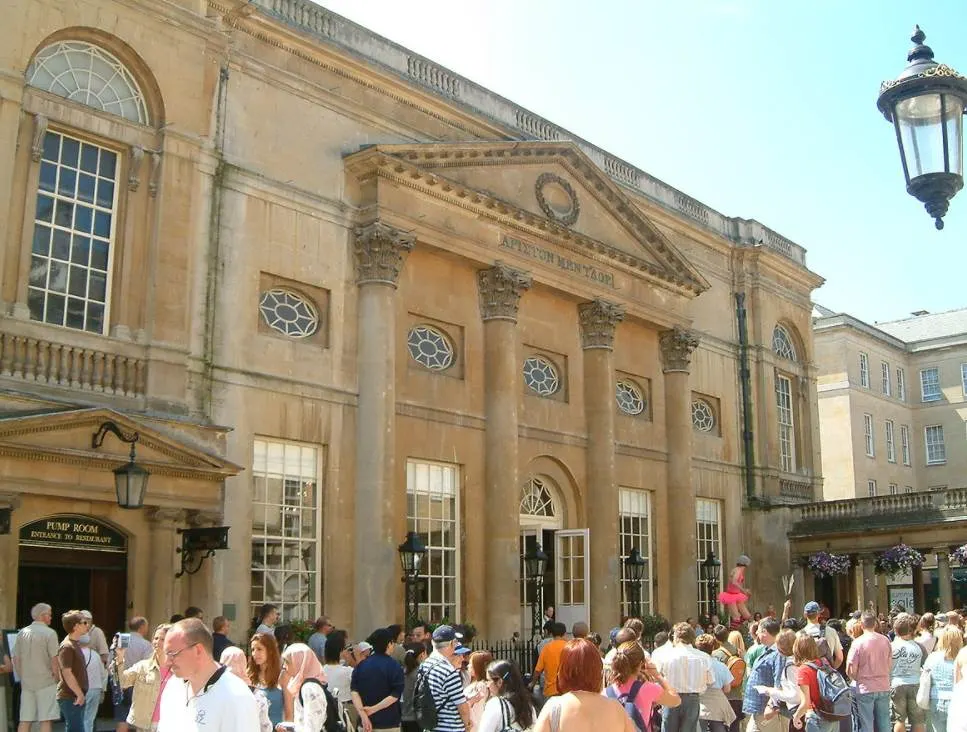One of the best-preserved Roman bathhouses in the United Kingdom can be found in the southwestern part of England. The city in which they are located was named after this ancient Roman entertainment complex as well.
In this article, you’ll discover some of the most interesting facts about the Roman Baths in Bath, one of the most popular tourist attractions in Somerset.
1. The baths were built on the site of a Celtic place of worship
The Roman Baths are one of the main attractions in the city of Bath, the largest city in Somerset, a county in South West England. The ancient bathing complex is located right in the heart of the city that is located in the valley of the River Avon.
The city of Bath was named after this Roman structure, but unlike other cities in England such as London and York, it wasn’t founded by the Romans after their conquest of Britain that started in the year 43 A.D.
When the Romans arrived here, the hot springs in the area were already the location of a Celtic place of worship dedicated to Sulis, a goddess that was only worshipped at the thermal springs of Bath.
It’s believed that this shrine was built by British king Bladud, a legendary king who presumably lived in the 9th century B.C.

2. The first building was a Roman temple built in the 60s A.D.
It’s assumed that Sulis was worshipped because she s associated with the healing powers of the thermal springs in Bath. That’s why the Romans remarkably continued to worship this deity following their conquest of the region.
The Romans even named the town “Aqua Sulis” which translates to “Waters of Sulis.” The Romans identified Sulis with Minerva, a goddess of both wisdom and strategic warfare among various other things.
Because of this, they first decided to build a temple on the site which was completed between 60 and 70 A.D. The bathing complex that uses the thermal springs of Bath was gradually built in the next 3 centuries.

3. The baths had every facility of the major Roman bathhouses in the Empire

The water of the hot springs arrives at the surface with a temperature of about 46 °C (114.8 °F). The Romans, however, created additional facilities to provide both hot and cold water to the bathers.
Just like the biggest Roman bathhouses ever built in the Roman Empire such as the Baths of Caracalla and the Baths of Diocletian, The Roman Baths in Bath featured a:
- Caldarium (hot bath)
- Tepidarium (lukewarm bath)
- Frigidarium (cold bath)
These were some of the most popular entertainment facilities in Roman Britain and were used until the end of Roman rule in Britain in the early 5th century as well.
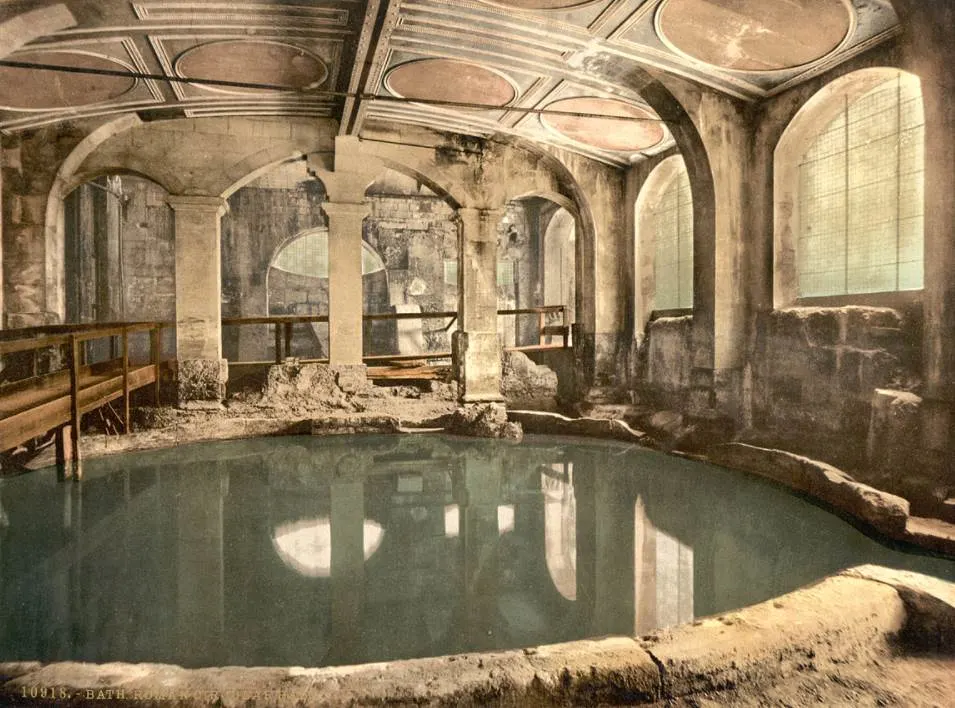
4. An enormous amount of water is pumped up naturally every day
The water of the hot springs comes from rain falling on a nearby limestone mountain range called the Mendip Hills. This water is absorbed and goes down to a depth of between 2,700 and 4,300 meters (8,900 and 14,100 feet).
The water at this depth reaches a temperature of anywhere between 69 and 96 °C (156.2 and 204.8 °F). The heat creates a natural geothermal system that moves upwards along the cracks of the limestones and eventually into the baths.
An incredible amount of 1,170,000 liters (257,364 gallons) of water is pumped up this way every day.
5. Nothing of the structure above the pillar bases is ancient
Although this bathing complex is one of the best-preserved in Britain, most of the structures above street level were additions that were built long after the Romans left Britain.
A completely new structure was built to replace the ruined ancient Roman baths in the Middle Ages, and most of the buildings we see today above the pillar bases of the baths date back to the 18th century.
The architects of the buildings were John Wood the Elder and his son John Wood the Younger. Both local architects left their permanent mark on Bath as they designed “The Circus” and the “Royal Crescent,” some of the best examples of Georgian architecture in England.
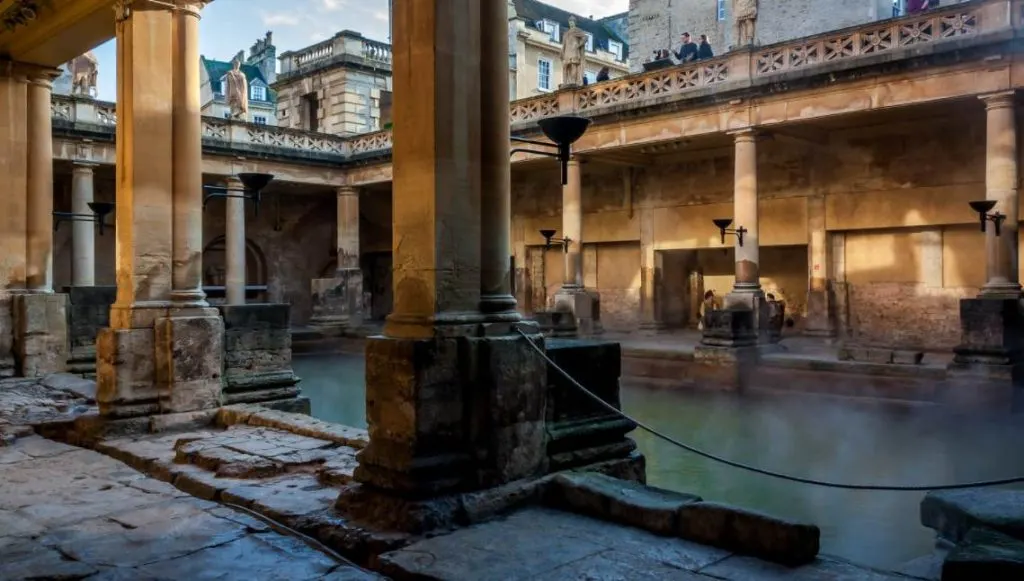
6. A remarkable discovery unveiled the bad reputation of the bathhouse
Of the copious amounts of Roman artifacts that have been found in the city of Bath, the Bath curse tablets are probably the most intriguing ones. This collection of 130 tablets was discovered in 1979 and features remarkable writings.
These tablets date back to between the 2nd and 4th centuries A.D. and were intended to call upon the goddess Sulis Minerva to curse the people who are mentioned on them.
The funny thing about these curses is that many of these were related to clothes being stolen from people while they were enjoying a hot bath at the Roman Baths.
Who wouldn’t curse the person that forced you to walk back home naked, right?
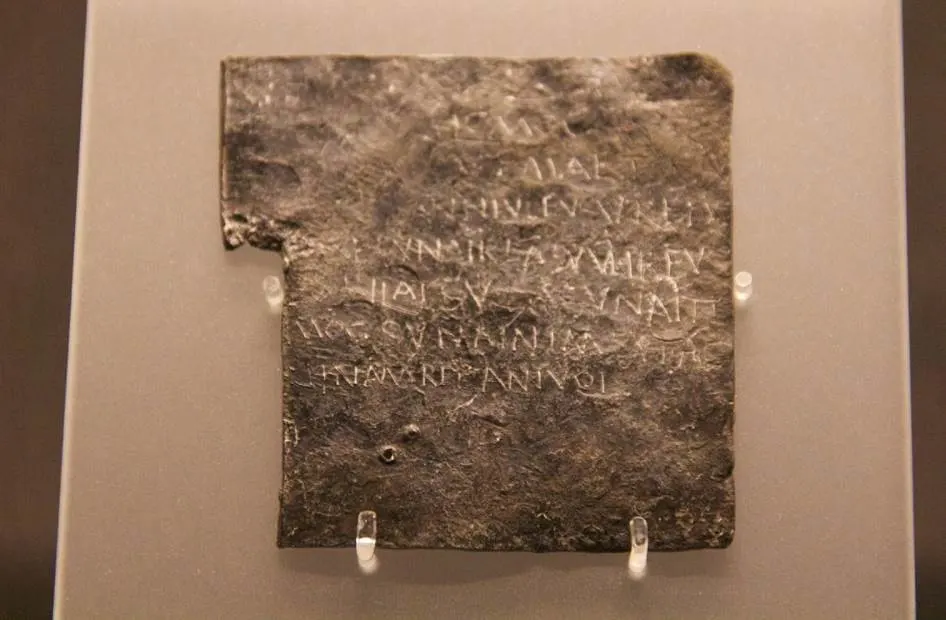
7. The museum houses a wide variety of ancient Roman artifacts
Many of the ancient Roman artifacts were items thrown into the hot springs which were considered to be sacred. Over 12,000 silver Denari coins were recovered from this hot spring, the largest collection in Britain.
Another amazing artifact in the museum of the Roman Baths is the gilt bronze head of the goddess Sulis Minerva that was discovered way back in 1727.
Many artifacts were part of the ancient Roman temple that was built in the 1st century A.D. This temple once stood in an elevated position about 2 meters above the courtyard of the complex.
The entrance of the temple was topped with a triangular pediment that was supported with fluted Corinthian columns. This pediment had a width of 7.9 meters (2 feet) and a height of 2.4 meters (8 feet).
Many parts of this temple, including sections of the pediment, are on display at the museum in Bath.
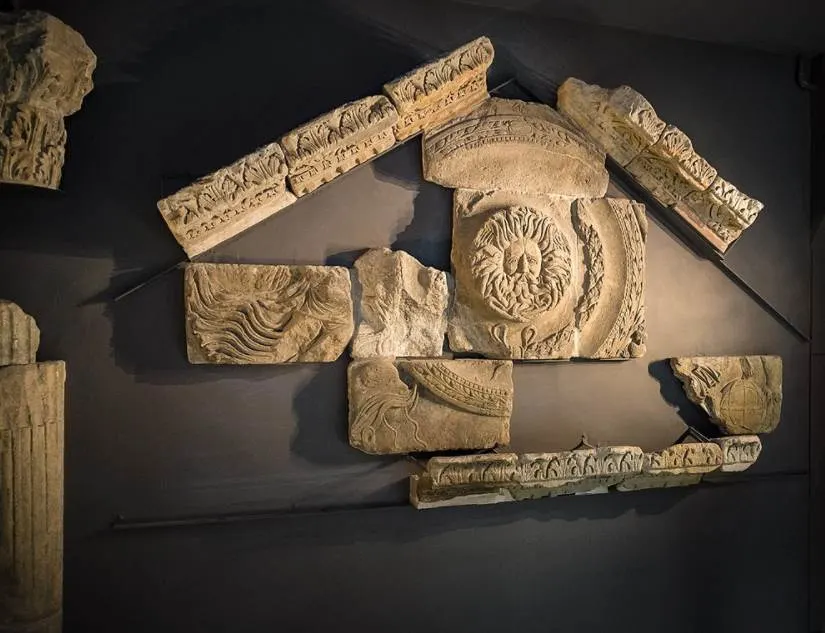
8. You can drink water from the hot springs in a historic building nearby
One of the most remarkable buildings in the vicinity of the Roman Baths in Bath is the so-called “Grand Pump Room,” a Neoclassical building that was built between 1789 and 1799.
It has been a Grade I listed building since 1950 and is one of the most popular tourist attractions in the city. That’s mainly because water from the hot springs is pumped directly into the room and visitors can drink from it.
